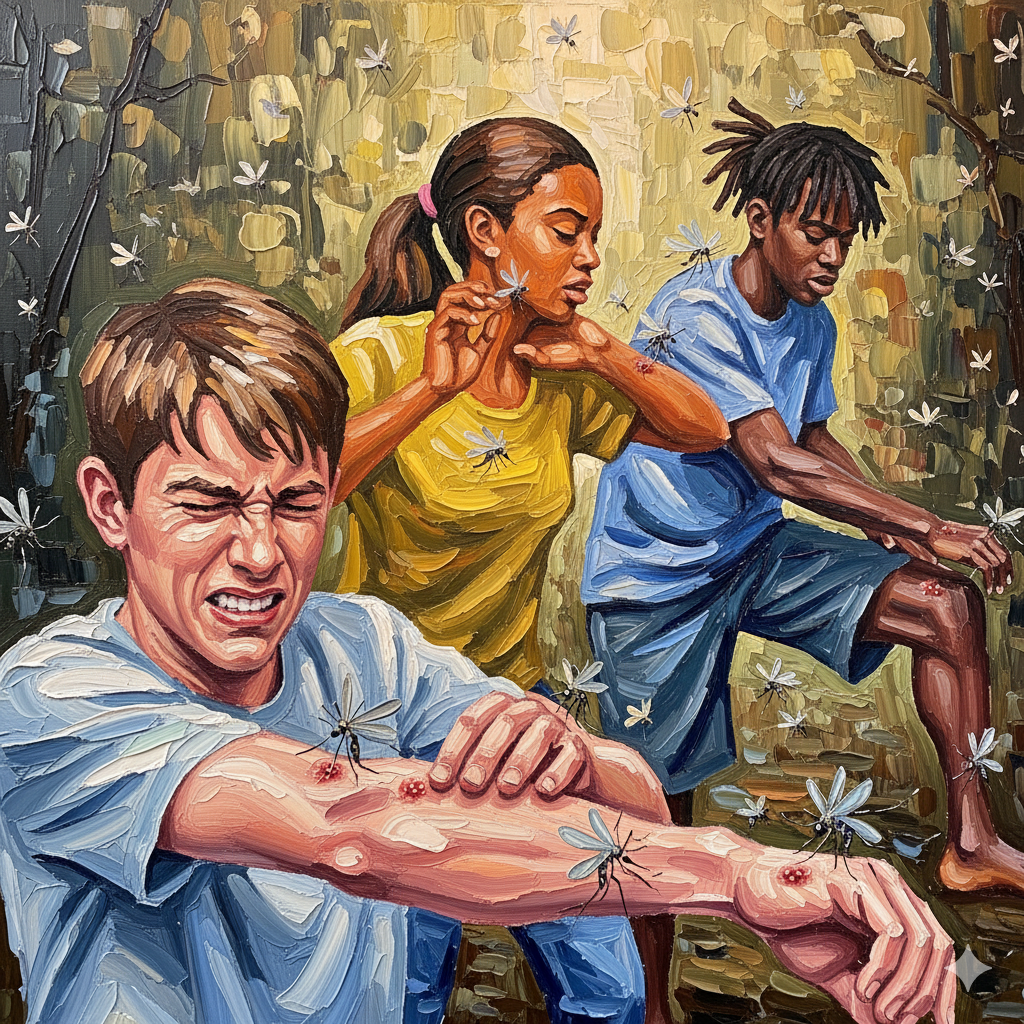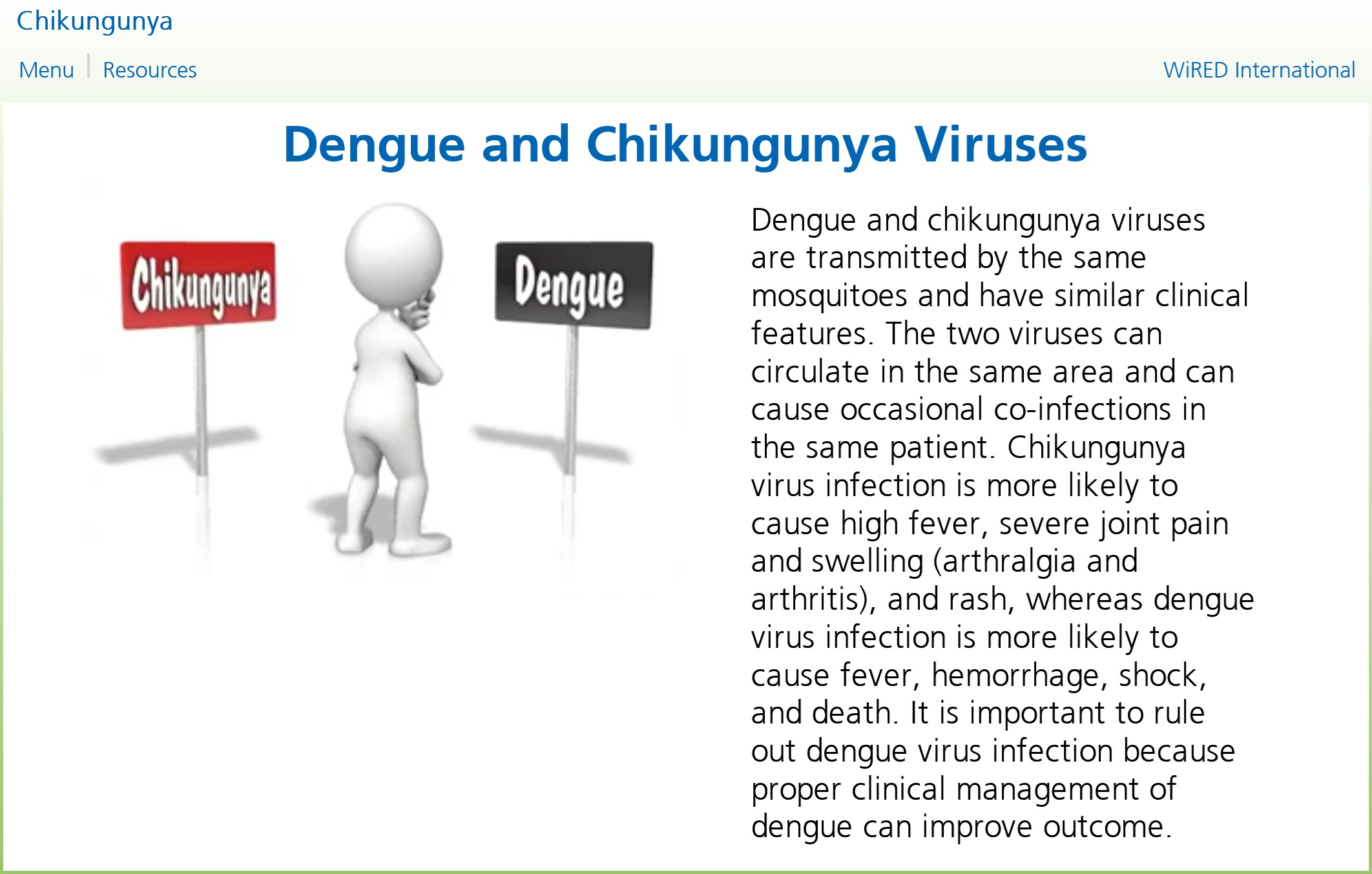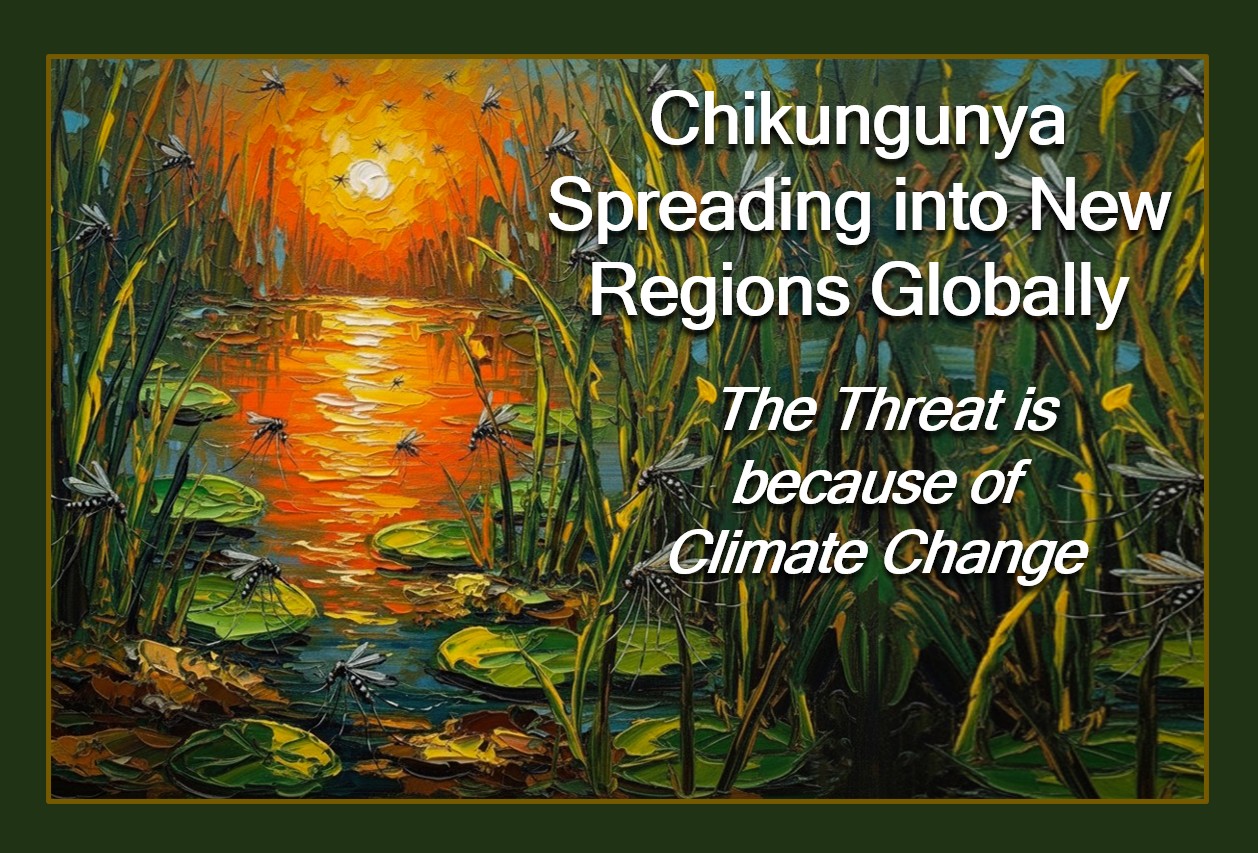By Allison Kozicharow; Edited by Elizabeth Fine
Introduction
Ten years ago WiRED International released a health education module on chikungunya, a mosquito-borne virus unknown to most people and rare outside tropical climate zones. Today, chikungunya cases are cropping up in new areas, where they were once nonexistent, as the mosquito migrates further afield.
Why is chikungunya spreading? The answer is climate change. According to The New York Times, chikungunya is entering “… more regions of the world, as climate change creates new habitats for the insects that carry it.”
 Further, so far this year, the article reports:
Further, so far this year, the article reports:
- 240,000 cases worldwide
- 200,000 cases in Latin America
- 8,000 cases in China.
What is chikungunya?
Chikungunya is an RNA virus transmitted by the bite from either of two species of mosquitoes, Aedes aegypti and Aedes albopictus. Symptoms can occur in as few as four days, when the person usually suffers fever, nausea, a rash and especially joint pain and swelling. The disease can be deadly, but more often it leaves the body in debilitating joint pain for months or even years. There is no cure for chikungunya and the only treatment is symptom relief.
 WiRED’s chikungunya module, in English and Spanish, describes the disease, its transmission, symptoms, treatments and methods of prevention. The course also looks at how clinical signs of chikungunya can be easily confused with dengue.
WiRED’s chikungunya module, in English and Spanish, describes the disease, its transmission, symptoms, treatments and methods of prevention. The course also looks at how clinical signs of chikungunya can be easily confused with dengue.
 Currently, the World Health Organization offers no approved vaccine. There are two existing vaccines, but they are limited in production and expensive, so only people in industrialized countries have access. There is no vaccine available for underserved populations where chikungunya thrives.
Currently, the World Health Organization offers no approved vaccine. There are two existing vaccines, but they are limited in production and expensive, so only people in industrialized countries have access. There is no vaccine available for underserved populations where chikungunya thrives.
The Role of One Health
WiRED has long promoted the concept of One Health — the recognition of the health interconnections between all species on our planet. In 2017 The Journal of Southern California Clinicians published an article titled “The Importance of a One Health Perspective in a Changing Environment.”
 In the article, the authors (two of whom are WiRED board members, Miriam Othman, M.D., and Gary Selnow, Ph.D.) discuss the impact of our shifting global climate on human and animal health and use mosquitoes as a prime example. The authors point out that while mosquitoes expand their geographic spread because of warmer temperatures, the viruses and parasites they carry grow to maturity more rapidly in the heat, thus arming mosquitos to infect more victims during their brief lives.
In the article, the authors (two of whom are WiRED board members, Miriam Othman, M.D., and Gary Selnow, Ph.D.) discuss the impact of our shifting global climate on human and animal health and use mosquitoes as a prime example. The authors point out that while mosquitoes expand their geographic spread because of warmer temperatures, the viruses and parasites they carry grow to maturity more rapidly in the heat, thus arming mosquitos to infect more victims during their brief lives.
 WiRED is preparing a  five-module series on One Health, which we expect to launch by early October. Stay tuned for our announcement!
WiRED is preparing a  five-module series on One Health, which we expect to launch by early October. Stay tuned for our announcement!
Conclusion
WiRED will continue to follow chikungunya outbreaks as well as other emerging and prevalent diseases in low-resource regions of the world — where people are particularly vulnerable to disease and death now that humanitarian global aid in the form of vaccines and medicine is greatly reduced due to the sweeping cuts from the Trump administration.
 WiRED’s active response to the cuts in medicines and vaccines is to train growing numbers of community health workers and to increase focus on disease prevention. Specifically, we are adding a number of training modules and animations available to the public. All WiRED’s educational material can be accessed, without cost, online or downloaded to phones and tablets via HealthMAP.
WiRED’s active response to the cuts in medicines and vaccines is to train growing numbers of community health workers and to increase focus on disease prevention. Specifically, we are adding a number of training modules and animations available to the public. All WiRED’s educational material can be accessed, without cost, online or downloaded to phones and tablets via HealthMAP.
The following table lists mosquito-borne diseases that affect humans and some animals. Note that all the diseases listed below can be deadly.

List of WiRED Modules Related to Mosquito-Borne Diseases
The Mosquito
Diet:Â Blood
Family:Â Culicidae
Number of species:Â more than 3,500
Average life span in the wild:Â 2 weeks to 6 months
Size:Â 1/8 to 3/4 in (0.3 to 2 cm)
Group name:Â Swarm
Natural predators:Â bats, birds, fish, frogs and tadpoles, turtles, dragonflies, damselflies, aquatic beetles, spiders



